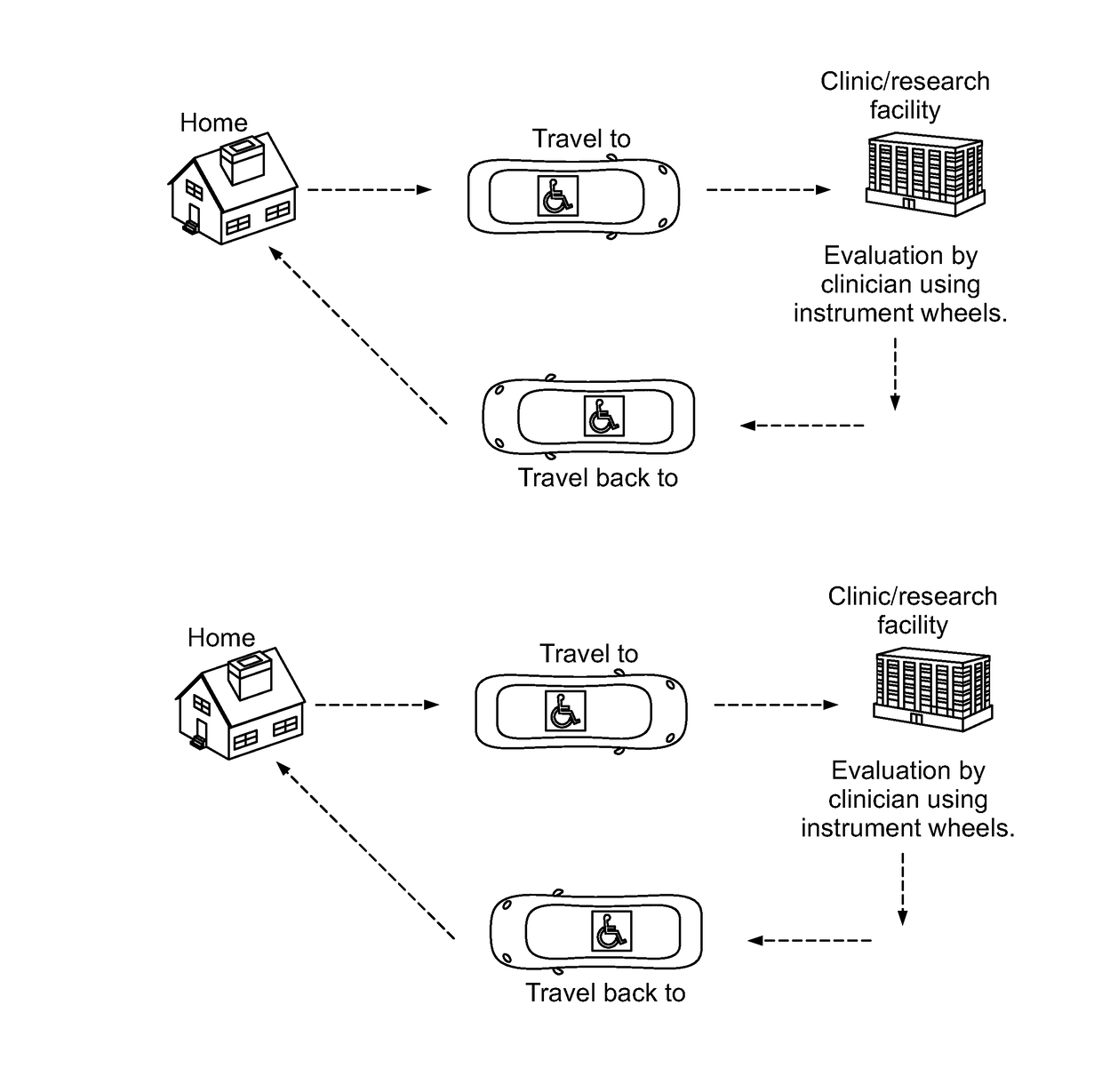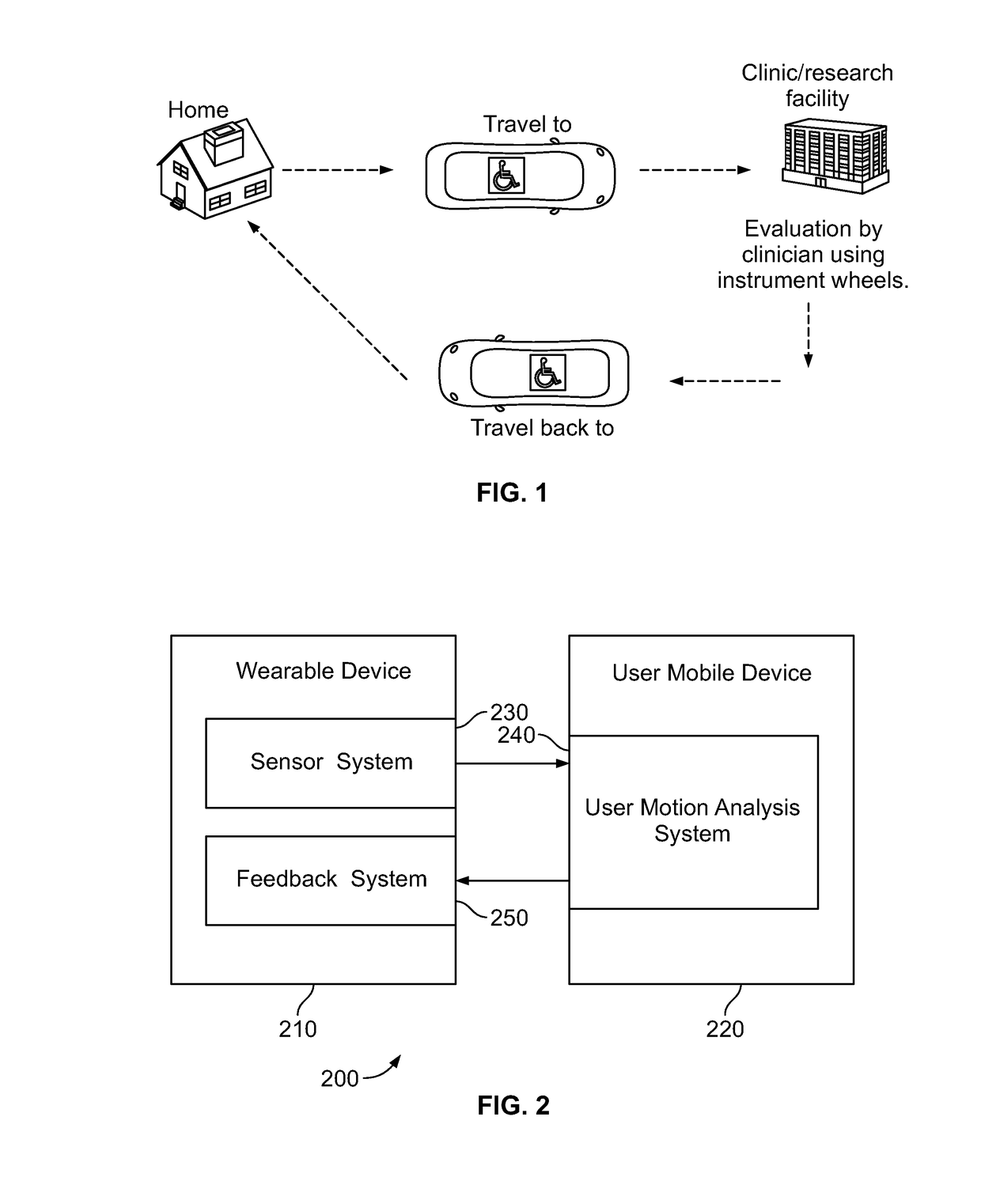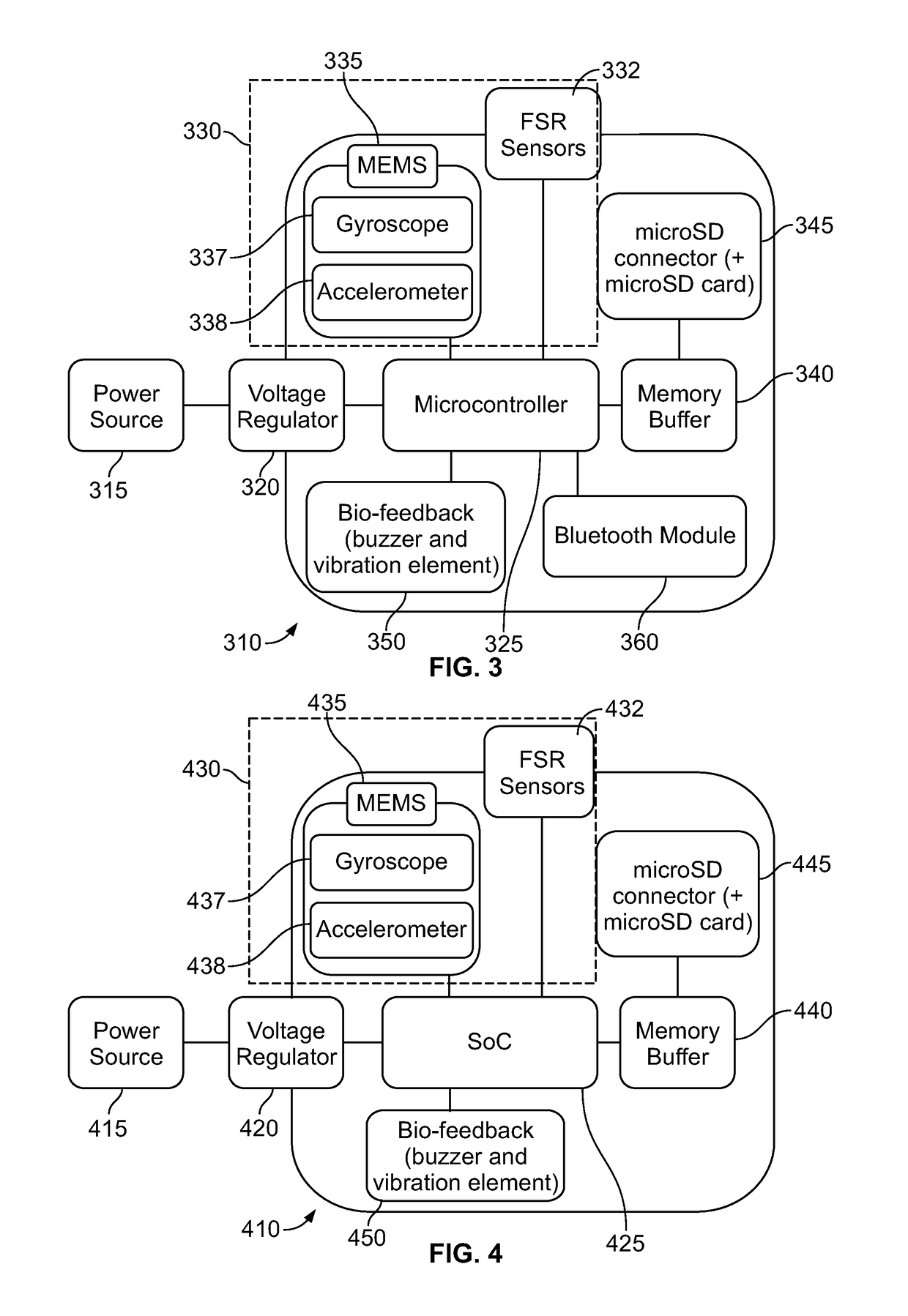Wearable device and system for preventative health care for repetitive strain injuries
a technology of health care monitoring and wearable devices, applied in the field of wearable, network connected healthcare monitoring systems, can solve the problems of increasing disability and health care costs, and affecting the quality of life of people with strain and/or stress injuries
- Summary
- Abstract
- Description
- Claims
- Application Information
AI Technical Summary
Benefits of technology
Problems solved by technology
Method used
Image
Examples
embodiment 1
[0147]At the end of a particular time interval, (ex. after 2 weeks).
[0148]User profile: User name: Mike
[0149]Table 1 illustrates a sample risk score calculation
TABLE 1Risk Scores (allVariablescores are in aensemblescale between 0 tocountCalculation inputs parameters10)1Assume body weight = 200 lb;8Height = 5 foot 8 inch.(BMI = 30.4)Wheelchair weight = 35 lb;62Number of Pushes / minute: 30 pushes / 5minute.3Average peak resultant force per2push / per arm: 25 lbs4Total push time per day: 60 minute35Number of bouts during this 606minutes: 30(So number of Start + Stop (braking) =60 and Number of breaking = 30):Impact lading risk score:6Self perceived pain score67Risk factor due to improper wheelchair7configuration8Age of Injury (24)69Gender (male)110Time since injury (10 years)9Average scores4.8
[0150]Using a risk score scale as shown below in Table 2
TABLE 2Risk ScoresRSI risk1-3 (green)Negligible to low risk4-6 (yellow)Medium risk, Watch out6+ (red)High risk, Seek help
[0151]If the user's desi...
embodiment 2
[0152]At the end of a particular time interval, (ex. after 2 months).
[0153]User profile: User name: Ana
[0154]Table 3 illustrates another exemplary risk score calculation.
TABLE 3Risk ScoresVariable(all scoresensembleare in a scalecountCalculation inputs parametersbetween 0 to 10)1Assume body weight = 100 lb;6Height = 5 foot 8 inch.(BMI = 21.4)Wheelchair weight = 30 lb;62Number of Pushes / minute: 50 pushes / 7minute.3Average peak resultant force per1push / per arm: 18 lbs4Total push time per day: 120 minute65Number of bouts during this 120 minutes:860(number of Start + Stop (braking) = 120and Number of breaking = 60): Impactlading risk score:6Self perceived pain score27Risk factor due to improper wheelchair5configuration8Age of Injury (8)39Gender (female)210Time since injury (21 years)711Possibility of injury risk based off of5medical reports (Ultrasound, X ray, MRIetc)Average scores5.5
[0155]Using the same risk scale shown above in Table 2, Ana will be placed at a medium risk zone.
embodiment 3
[0156]At the end of a particular time interval, (ex. after 2 months).
[0157]User profile: User name: James
[0158]Table 4 illustrates another exemplary risk score calculation.
TABLE 4Risk ScoresVariable(all scoresensembleare in a scalecountCalculation inputs parametersbetween 0 to 10)1Assume body weight = 300 lb;8Height = 6 foot.Wheelchair weight = 35 lb;72Number of Pushes / minute: 30 pushes / 5minute.3Average peak resultant force per7push / per arm: 40 lbs4Total push time per day: 90 minute65Number of bouts during this 90 minutes:6306Self perceived pain score87Risk factor due to improper wheelchair9configuration8Age of Injury (34)89Gender (male)110Time since injury (16 years)711Possibility of injury risk due to6propulsion based off of medical reportson shoulder (Ultrasound, X ray, MRIetc)12Self rated dissatisfaction with quality of7livingAverage scores7.1
[0159]Using the same risk scale shown above in Table 2, James will be placed at a medium risk zone.
[0160]In another embodiment the risk sc...
PUM
 Login to View More
Login to View More Abstract
Description
Claims
Application Information
 Login to View More
Login to View More - R&D
- Intellectual Property
- Life Sciences
- Materials
- Tech Scout
- Unparalleled Data Quality
- Higher Quality Content
- 60% Fewer Hallucinations
Browse by: Latest US Patents, China's latest patents, Technical Efficacy Thesaurus, Application Domain, Technology Topic, Popular Technical Reports.
© 2025 PatSnap. All rights reserved.Legal|Privacy policy|Modern Slavery Act Transparency Statement|Sitemap|About US| Contact US: help@patsnap.com



